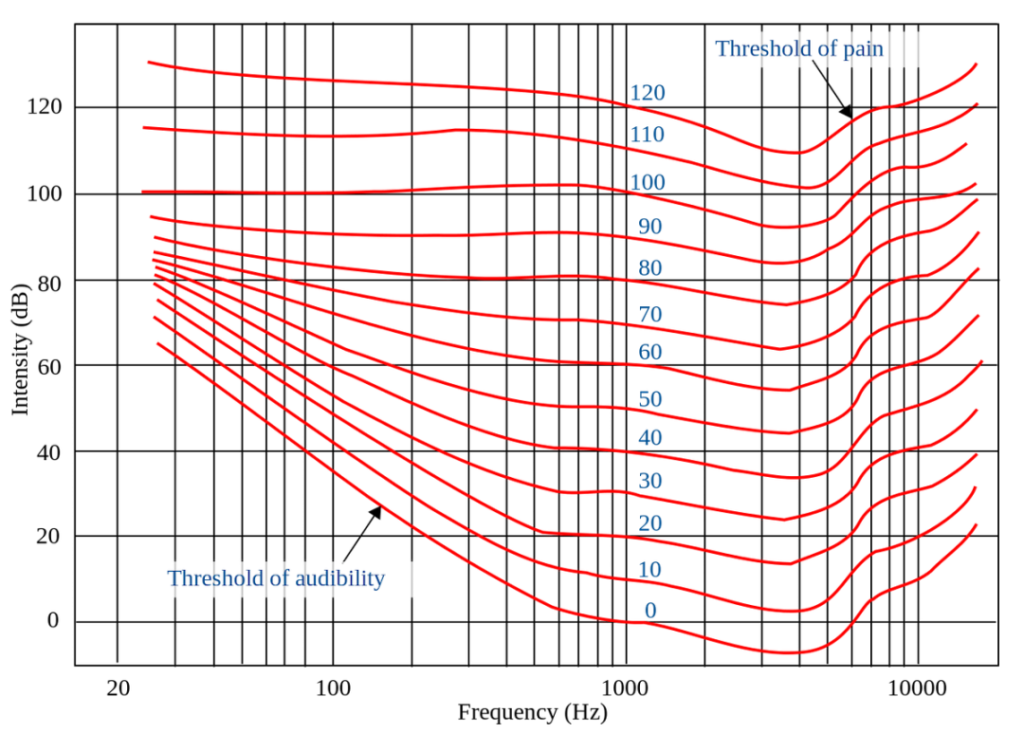The Fletcher Munson Curve and how understanding it will make you a better mixer (especially with eq).
Knowing that we as humans don’t hear musical frequencies the same will help you to understand what you need to listen for in a sound and how to correct or enhance it.
The Fletcher Munson curve isn’t hard to understand and in this video I will demonstrate how it works so you can confidently use your EQ in your next mix and get a great balance.
Mixing is an important aspect of music production. In order to create a more balanced mix, it is important to understand the Fletcher Munson Curve. This guide will outline what the FMC is and how it can be applied to your mixes for better dynamics and balance.
What Is The Fletcher Munson Curve?
The Fletcher Munson Curve was first proposed in 1933 and was a mathematically derived curve that determines how humans perceive and react to sound. The original curve created by Fletcher Munson is below:

The human ear hears audio at different frequencies differently. At lower frequencies, the human ear has a more difficult time hearing quiet sounds. Conversely, the human ear hears high frequencies much more clearly.
When it comes to the EQ balance and mixing of your song, it is important to notice how the human ear hears these frequencies differently and factor this into your mix.
As a side note, humans also hear midrange frequencies much more clearly than other frequencies, so it is important to concentrate on this area of your mix and make sure that the midrange sounds are clear and defined. This should be done early in the mixing process so that you do not have to worry about it later when you are creating the final sound of your song.
